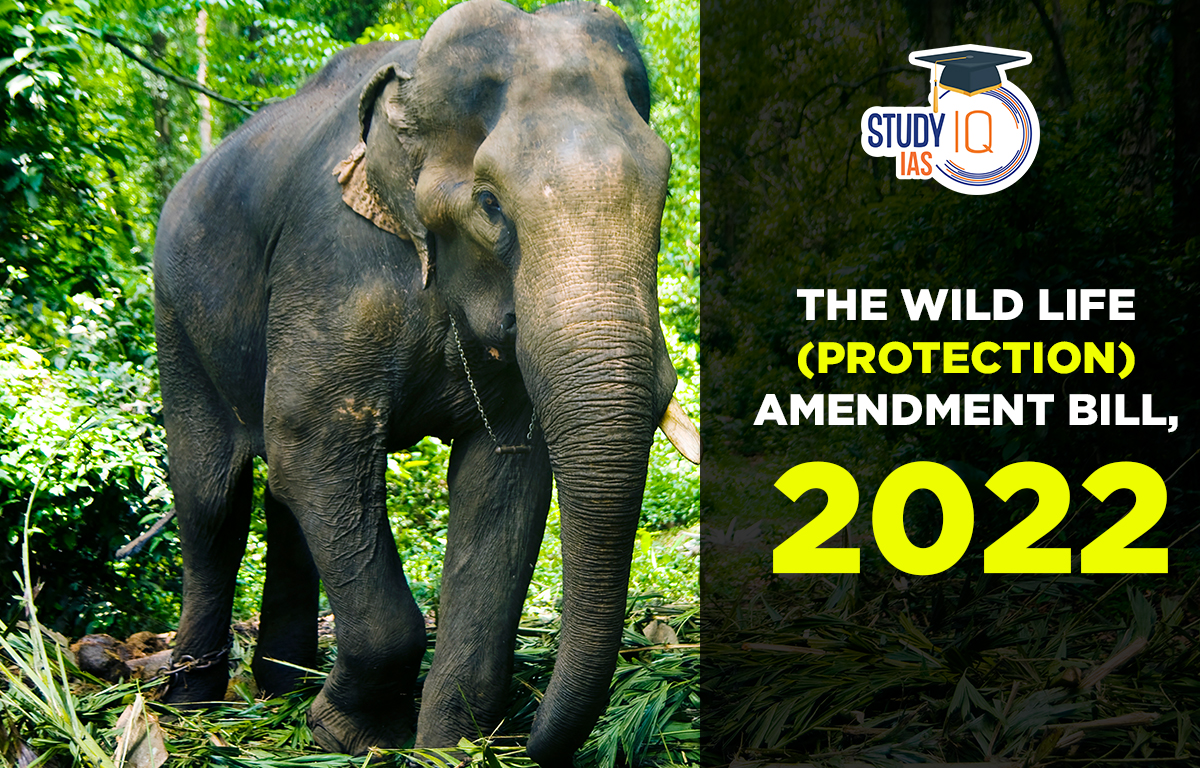Table of Contents
Key Features of Wild Life Protection Amendment Bill, 2022
|
About |
|
|||||||||
|
Implementation of CITES |
Obligations under CITES
Additionally, every person possessing live specimens of scheduled animals must obtain a registration certificate from the Management Authority. |
|||||||||
|
Rationalizing Schedules |
|
|||||||||
| Invasive Alien Species |
|
|||||||||
| Surrender of Captive Animals |
|
|||||||||
| Conservation Reserves |
|
|||||||||
| Control of Sanctuaries: |
|
|||||||||
| Penalties | The Bill increases the fines for violating the provisions of the Act.
|
Concerns Associated with the Wildlife Protection Bill
- Elephant protection: The bill permits the transfer or transport of a captive elephant for a religious or any other purpose by a person having a valid certificate of ownership.
- The sweeping ambit of “any other purpose” in the present amendment will empower elephant traders, put wild populations at greater risk of capture and defeat the very purpose of WLPA.
- Instead, the Parliamentary Standing Committee recommended that it should be limited to temple elephants kept for religious purposes.
- Vermin species: The Bill seeks to do away with Schedule V for vermin species entirely.
- This gives the Centre direct power to declare any species to be ‘vermin’ and make way for them to be freely hunted. Thus, declaring any species as vermin becomes easier.
- Against Federal Structure of Indian Constitution: Protection of wild animals and birds is a subject under the Concurrent List of the Constitution. The bill reduces the state’s involvement in wildlife management and injures India’s Federal structure.
What is CITES?
- The Convention on International Trade in Endangered Species of Wild Fauna and Flora (CITES) is an international agreement to which States and regional economic integration organizations adhere voluntarily.
- CITES was drafted as a result of a resolution adopted in 1963 at a meeting of members of the International Union for Conservation of Nature (IUCN). It entered into force in July 1975.
- Aim: Ensure that international trade in specimens of wild animals and plants does not threaten their survival.
- The CITES Secretariat is administered by UNEP (The United Nations Environment Programme) and is located at Geneva, Switzerland.
- The CITES classifies plants and animals according to three categories, or appendices, based on threat. They are:
- Appendix I species: It lists species that are in danger of extinction. It prohibits commercial trade of these plants and animals except in extraordinary situations for scientific or educational reasons.
- Appendix II species: They are those that are not threatened with extinction but that might suffer a serious decline in number if trade is not restricted. Their trade is regulated by permit.
- Appendix III species: They are protected in at least one country that is a CITES member states and that has petitioned others for help in controlling international trade in that species.


 SSC CGL Exam 2025 Apply Online Starts Ap...
SSC CGL Exam 2025 Apply Online Starts Ap...
 Daily Quiz 19 April 2025
Daily Quiz 19 April 2025
 Vehicle-to-Grid (V2G) Technology and its...
Vehicle-to-Grid (V2G) Technology and its...





















